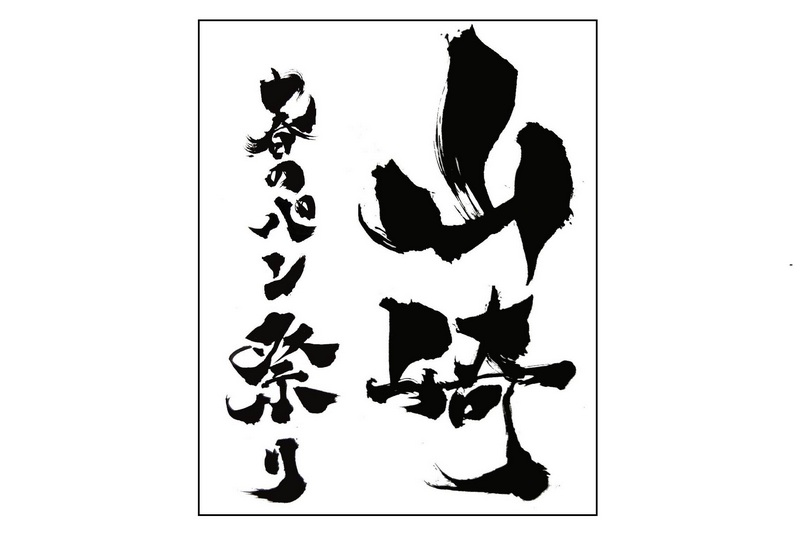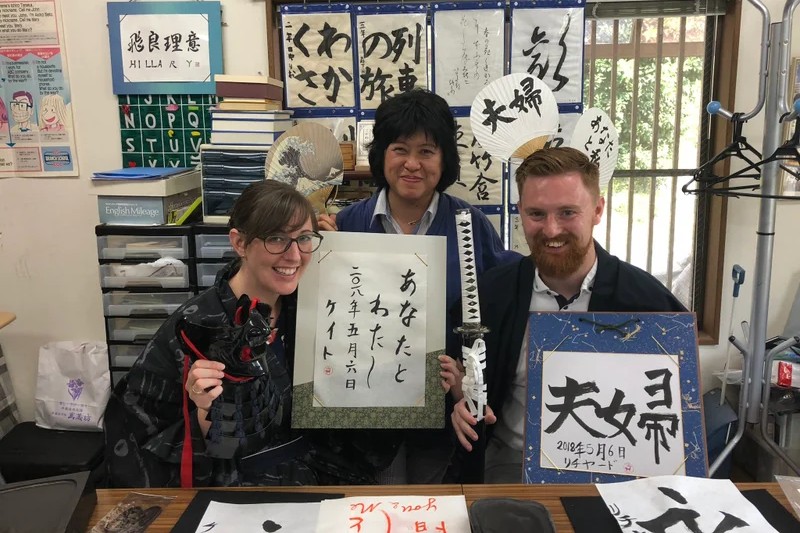Shodo - Japanese calligraphy
Shodo (書道, shodō) is the Japanese art of calligraphy. Similar arts also exist in Korean culture (seoye), Vietnamese (thu pap), and especially in Chinese culture (shufa), the country from which Japan imported the writing system around 400 AD.
The philosophy of the shodo
The art of Japanese calligraphy has taken on a distinct nature from the other calligraphic arts of the Far East, mainly due to the influence of Zen thought. A shodo work is considered a work of art, like a painting, for example. Being made with a brush, there is no possibility of erasing or adjusting what the ink has traced, each mark can be more or less decisive, more or less fast, more or less subtle, and represents the soul of the calligrapher in the instant in which it was drawn. For every single piece of paper, the calligrapher has only one chance to create with the brush, he must concentrate and be fluid in execution. An expert eye notices any expression of nervousness and lack of confidence in an artist's work. What comes out on the paper is seen as a representation of the calligrapher's mood at the moment of execution. To become excellent shodo masters, the right way according to Zen philosophy is not continuous practice, but meditation that leads to "emptying" oneself, to free oneself from any disturbance that may be a nuisance during the realization of a work of calligraphy.

In contemporary Japan, the shodo is an integral part of education and art. Many elementary and middle school children attend shodo classes, as shodo is seen as very positive for parents' education of their children. The shodo would help children and teenagers to increase their ability to concentrate. In high school, calligraphy is one of the choices between art subjects, along with music or painting. In many schools and universities there are also student shodo clubs.
Tools for practicing shodo
To practice the art of the shodo you need 4 fundamental tools, defined as the "four treasures of the shodo":
- A sheet of paper (kami, 紙).
- A brush (fude, 筆), which can have different shapes or sizes depending on the style followed.
- A tablet of ink (sumi, 墨) that is dissolved in water.
- A particular hollowed-out stone (suzuri, 硯), filled with water, with which the ink is melted.
Other tools often used are a paperweight (
bunchin, 文鎮), a cloth that absorbs excess ink to be placed under the sheet (
shitajiki, 下敷き), a container for water (
suiteki, 水滴), a brush rest (
fudeoki, 筆置き) and a brush holder (
fudemaki, 筆撒き).
Where to go to discover the art of shodo in Japan
Shodo museums
As this is, as mentioned, a work of art equated to painting, you will find numerous museums of calligraphy works throughout the country. Moreover, even in art museums not strictly related to calligraphy, it is quite common to find some works of shodo on display, as for example happens in the immense
Tokyo National Museum of
Ueno. However, keep in mind that it can be very difficult for a foreigner to fully appreciate this type of works, particularly if you have no knowledge of the Japanese writing system (or Chinese, from which the former derives) and of the Japanese language. In Tokyo we point out two museums. One is the
Mitsuo Aida Museum inside the futuristic Tokyo International Forum (
Tokyo Station area, which exhibits the works of poet and calligrapher Mitsuo Aida (1924-1991). Another is the
Taito Japanese Calligraphy Museum (
Ueno area). This is more of a calligraphy history museum than an art museum. The museum exhibit includes a whole range of historical artifacts that show changes over time in writing styles, from the earliest inscriptions on animal bones and turtle shells from the pre-Christian era to the kaisho print style, which is the current standard kanji character writing style.
Shodo lessons
A very popular interactive experience among tourists in Japan is to take a short introductory lesson on shodo practice, usually lasting a couple of hours. In this way you will have the opportunity to learn the basics of Japanese calligraphy, observe the execution of a shodo work, as well as try yourself to try your hand with brush and paper, under the guidance of a master.
- Book a Japanese calligraphy class in Kyoto: after a short introduction and demonstration, you will have the opportunity to try to write a kanji of your choice and your name in Japanese with ink and brush, on washi paper. And at the end you can take your work with you as a nice souvenir!
- Book a Japanese calligraphy class in Tokyo: Master Hoyu Sakuma will guide you to discover this art in his school near Koganei Park in Tokyo. Here too you can choose a kanji of your choice and you will be guided in the execution. You can then take home the precious souvenir!
 the introductory lesson for tourists with the teacher Hoyu Sakuma
the introductory lesson for tourists with the teacher Hoyu Sakuma
Online shodo lesson directly from Japan
Master Hoyu Sakuma also offers online calligraphy lessons, all you need is a PC and a smartphone or tablet, using the Zoom software for video connection and the Zen Brush 2 app for practice. For more details visit
this website.
Guided tours, activities and other things to do
If you are planning a trip to Japan and you want to do something more than just visiting famous places and monuments, we suggest you to use
Rakuten Travel Experiences.
How to use Rakuten Travel Experiences
Rakuten Travel is a very useful website to
enrich your travel experience, especially if you are going solo or it's your first time in Japan.
Because of the language barrier (and more), in Japan it is very difficult to interact with the locals and to get off the tourist track.
Thanks to Rakuten Travel you can find a lot of interesting and sometimes unique
guided tours and activities all over Japan (and not only in Japan), that you would otherwise never be able to enjoy.
But there's more: on Rakuten Travel you can also
buy tickets for several famous attractions, events, transportation and other useful services for tourists. Last but not least, you can
reserve a table in hundreds of restaurants.
Some examples
Take a look at Rakuten Travel Experiences
You may also be interested in